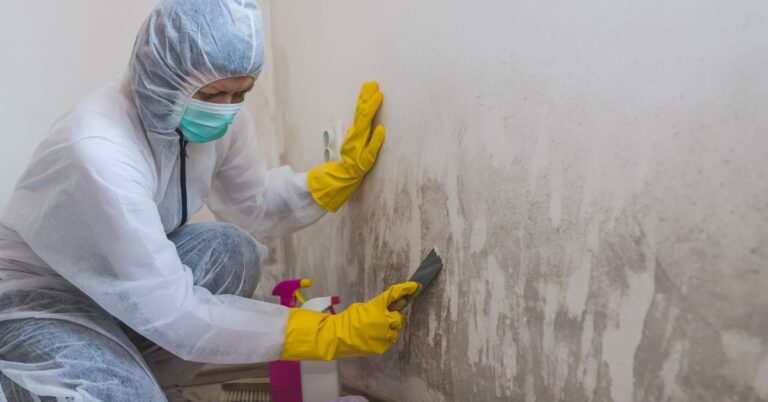Identifying a Mold Problem
Spotting mold in your home early can save you a lot of trouble. Mold often grows in damp, dark areas and can sometimes be difficult to detect until it has spread significantly. Look out for musty odors, discolored walls, and unusual health symptoms such as sneezing, coughing, and skin irritation. These signs often indicate mold presence. If you notice any of these warning signs, it may be time to consider looking into mold remediation in New Jersey to address the issue before it worsens.
Mold remediation in New Jersey is essential due to the state’s humid climate, which can foster mold growth in homes and businesses. Professional services typically involve identifying the source of moisture, safely removing contaminated materials, and applying treatments to prevent future infestations. Homeowners are advised to take immediate action because, if ignored, mold can cause structural damage and health problems.
Health Impacts of Mold
Mold exposure can lead to a variety of serious health issues. According to the EPA, individuals exposed to mold, especially those with pre-existing respiratory conditions, may experience nasal stuffiness, throat irritation, coughing, and even skin irritation. Prolonged contact might worsen asthma symptoms and cause respiratory infections in extreme circumstances. Furthermore, mold-related disorders are more common in people with weakened immune systems. Addressing mold issues promptly protects your home’s structure and safeguards your health and well-being.
Tips for Preventing Mold Growth
Preventing mold growth in your home can save you from extensive remediation efforts and health problems. Here are some effective tips:
- Keep humidity levels low, ideally between 30% and 50%. Use dehumidifiers in particularly damp areas such as basements.
- Fix leaks promptly to prevent moisture accumulation. This includes leaks in the roof, plumbing, and windows.
- Ensure proper ventilation in high-moisture areas such as bathrooms, kitchens, and laundry rooms. Installing exhaust fans can help reduce humidity levels.
- Consistently clean and dry areas that are prone to dampness, including shower stalls, window sills, and under sinks.
DIY Mold Remediation Steps
If you’re dealing with a small mold problem, you can often handle it yourself with the right precautions. Here are detailed steps for DIY mold remediation:
- To protect yourself against mold spores, put on safety gear such as goggles, a mask, and gloves.
- To stop the spores from spreading to other areas of the house, use duct tape and plastic sheeting to seal up the affected area.
- Use a solution of detergent and water to remove mold from hard surfaces. For more stubborn mold, you can use a specialized mold cleaner.
- Dispose of any porous materials that are extensively damaged by mold, such as drywall, carpet, and ceiling tiles. These materials ought to be changed since they may contain mold spores.
- Use a HEPA vacuum to clean up debris and further reduce the spread of mold spores. HEPA vacuums are designed to trap fine particles that can cause health issues.
While DIY remediation is feasible for small areas, always be cautious. If the mold covers a large area or is located in your HVAC system, professional help may be necessary.
When to Seek Professional Help
If the mold infestation in your home covers more than 10 square feet or if it’s found in your HVAC system, it’s prudent to seek professional remediation. Experts possess the knowledge and specific equipment needed to properly manage extensive mold problems. They can also identify hidden mold, which is often missed in DIY efforts. Utilizing professional services ensures that the mold is completely removed and reduces the likelihood of it returning. Professional help provides peace of mind and comprehensive remediation that DIY efforts might not achieve.
Common Errors in Mold Remediation
Avoiding common mistakes in mold remediation ensures the process is effective and long-lasting. Here are some pitfalls to watch out for:
- Failing to fix the underlying moisture problem. Mold is likely to reappear if the source of moisture is not addressed.
- Using bleach on porous materials. While bleach is efficient in killing mold on hard surfaces, it is less successful at penetrating porous materials and may leave behind water, which could encourage the growth of more mold.
- Not wearing proper protective gear. Mold spores can cause respiratory issues, so protecting yourself during the remediation process is essential.
- Ignoring hidden mold. Mold can grow behind wallpaper, under carpets, or inside wall cavities. Failing to address these hidden areas can lead to recurrent mold problems.
The success of your mold remediation efforts can be substantially increased by being aware of these typical mistakes and implementing preventative measures.
Importance of Regular Inspections
Regular home inspections are vital for early detection and prevention of mold problems. Scheduling inspections at least once a year, particularly in humid climates, can help catch potential issues before they escalate. Inspect areas that are prone to dampness, such as basements, attics, and behind appliances. Early detection not only saves money on extensive repairs but also minimizes health risks associated with mold exposure. A proactive approach to house upkeep that guarantees a safe and healthy living environment is routine inspections.
Using Mold-Resistant Materials
Purchasing mold-resistant materials can add an additional layer of defense against mold growth in wet environments like bathrooms and basements. Mold-resistant drywall and paints are specifically designed to inhibit mold development. Using these materials adds value to your home and helps maintain a healthier living environment. These proactive measures can prevent mold from becoming a recurring issue and reduce the need for frequent remediation efforts. Implementing mold-resistant materials is a long-term investment in the safety and integrity of your home.
